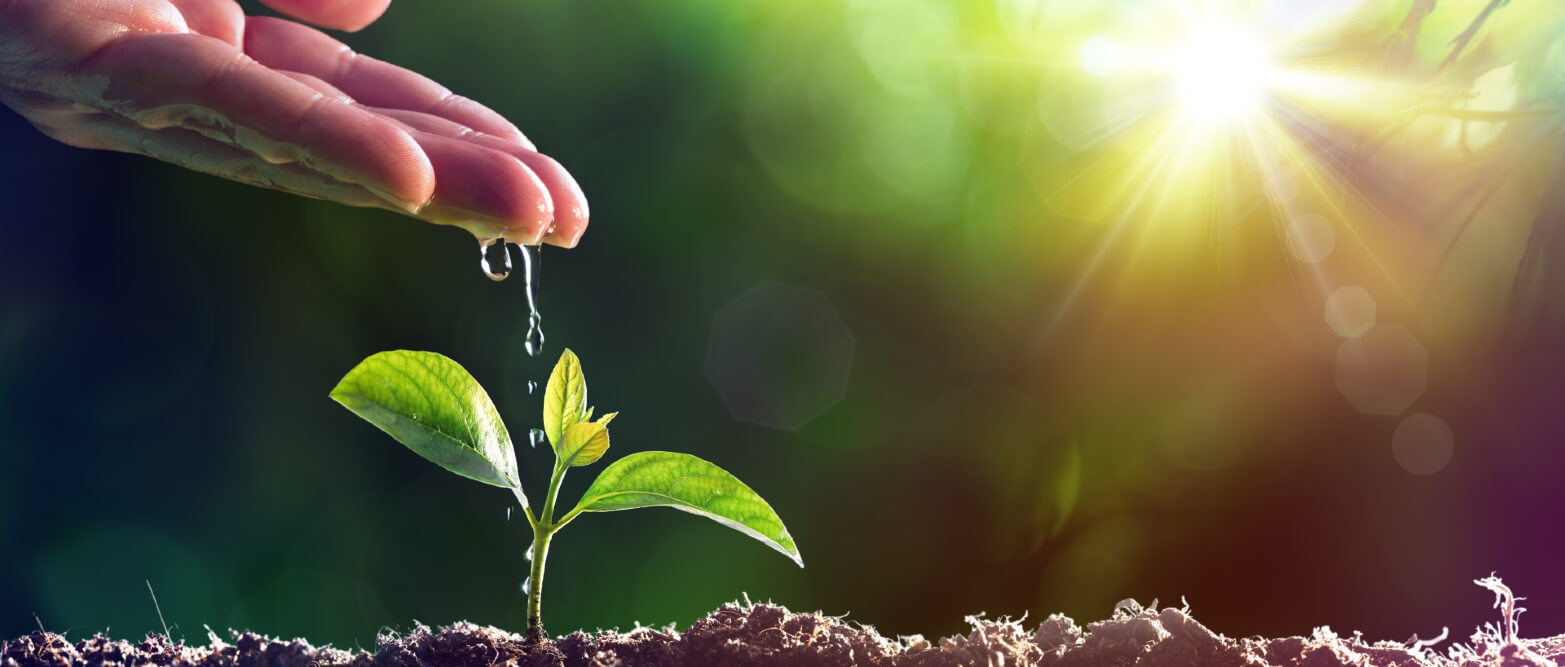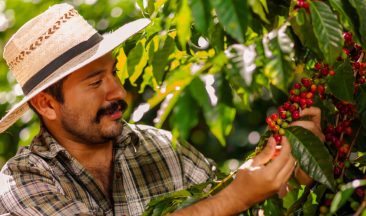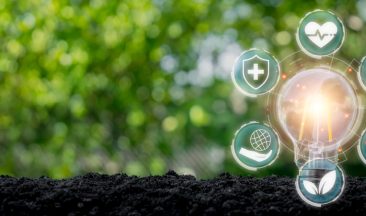A plant biostimulant can be defined as:
“any substance or microorganism applied to plants with the aim to enhance nutrition efficiency, abiotic stress tolerance and/or crop quality traits, regardless of its nutrient content” (du Jardin, 2015).
To gain more insight into agricultural biostimulants, we spoke with Dr. Eduardo Lopes Cancellier, ICL’s Agronomy Specialist in Biostimulant Solutions, who supports this definition and emphasizes their importance in the new era of farming. This is what we learned.
In modern agriculture, the need to sustain and increase production while ensuring greater sustainability drives the development of innovative solutions like biostimulants. The agricultural sector faces the dual challenges of boosting crop yields to feed a growing population and doing so sustainably. As a result, many farmers are seeking alternatives to traditional crop protection and nutrition methods.
Introducing Agricultural Biostimulants
Agricultural biostimulants are distinct from traditional fertilizers and crop protection products. Biostimulants offer a promising sustainable solution to these challenges by improving plant health and productivity.
These products are beneficial for various applications, including enhancing crop yields, improving soil health, increasing stress tolerance, and supporting healthy, resilient lawns as a biostimulant for turf. Biostimulants can also enhance the quality and nutritional value of fruits and vegetables, contribute to better seedling emergence, and support overall plant vigor.
So, what are biostimulants exactly and how do they work?
They are neither plant protection products nor nutrients. While fertilizers supply essential nutrients, or pesticides protect against pests and diseases, biostimulants enhance the plant’s innate processes to improve growth and resilience. Thus, it is important to remember that they are not fertilizers and do not replace the need for essential nutrients.
ICL, a leader in the development of biostimulants, has been at the forefront of this agricultural revolution.
Types of Plant Biostimulants
Unlike many other inputs, biostimulants can be made from a wide range of materials. They can be complex mixtures containing organic (for example, extracts of plants or seaweeds, molasses, protein hydrolysates, humic substances), microbial (fungi and bacteria), and/or inorganic constituents.
Amino acid
Amino acids are the building blocks for proteins. Amino acid biostimulants can increase plant protein production and influence N uptake, plant signaling, C and N metabolism and so many other physiological effects.
Humic and fulvic acids
Humic and fulvic acids occur naturally in the soil because of organic matter breakdown by microbes. Organic matter is a common measure of soil fertility, as it affects the soil’s overall physical, physio-chemical, chemical, and biological properties and, in turn, the plants growing in it. Humic substances improve soil health and growth, they also influence directly the plant’s absorption and use of available nutrients.
Seaweed extracts and botanicals
Many biostimulants are derived from algae, particularly the well-known seaweed extracts. These extracts come from the brown, red, and green algae families, and they can be applied to soils, seeds, hydroponic solutions, or as foliar treatments.
They enhance plant growth and trigger internal physiological responses, increasing their innate capacity to tolerate abiotic stresses, such as salinity, heat, and drought. Seaweed also contains significant amounts of osmoregulating substances, vitamins, polysaccharides, and even some phytohormones, further supporting plant health and resilience.
Botanical extracts are a complex mix of substances extracted from plants. Due to their active content, botanicals containing secondary metabolites can be used as biostimulants, enhancing plant growth and resilience.
Beneficial fungi
Fungi interact with plant roots and form a mutual symbiosis when both organisms directly interact and establish mutually beneficial relationships. These fungi can enhance nutrient uptake and improve plant health. Mycorrhizal fungi, for example, extend the root system of plants, increasing water and nutrient absorption. They can also help plants better resist diseases and environmental stresses, leading to healthier and more robust growth.
Beneficial bacteria
Bacteria-plant interactions can promote nutrient supply and use efficiency, increase disease resistance, and enhance abiotic stress tolerance. These bacteria help improve soil health and plant growth. Some rhizobacteria, for instance, can fix atmospheric nitrogen or dissolve additional soil phosphorus, making them available to plants. They also produce growth-promoting substances such as phytohormones which significantly enhance root and shoot growth.
Inorganic compounds
Elements such as Co, I, Al, Na, Se, and Si are present in soils and plants as different inorganic salts and insoluble forms. These promote plant growth, but unlike macronutrients, they are not essential. Beneficial functions of these inorganic compounds include strengthening cell walls, osmoregulation, and hormone signaling.
Biostimulants can also be made from mixtures of different organic, inorganic, and microbial components. What matters is the effect on the plant. For example, ICL Bioz Moonstone is a unique biostimulant product for abiotic stress recovery. Bioz Moonstone boosts antioxidant metabolism, leading to a fast recovery from different types of stress and increased plant development under adverse situations. It comprises a carefully engineered composition of amino acids and micronutrients.
This is reflected in the EU’s Fertilising Products Regulation (FPR), which specifies that plant biostimulants should have the effect claimed on their labels. The justification for these claims (as well as compliance with the safety requirements) must be assessed and verified by an independent body.
The Essence and Mechanisms of Biostimulants
Biostimulants work through a variety of mechanisms to enhance plant growth and development. These include improving nutrient availability, increasing stress tolerance, and stimulating natural growth processes. Dr. Cancellier elaborates: “Biostimulants enhance a plant’s natural processes which are often underutilized.”
This intrinsic enhancement sets biostimulants apart from traditional agricultural inputs, which often focus on only one specific area or mechanism.
Enhancing Nutrient Use Efficiency (NUE)
One of the primary functions of biostimulants is to enhance nutrient use efficiency (NUE). By improving the plant’s ability to absorb and use nutrients, biostimulants can complement the use of fertilizers, potentially reducing the overall need for additional inputs. This lowers production costs for farmers and mitigates the environmental impact associated with nutrient runoff and leaching.
Non-microbial biostimulants enhance nutrient use efficiency by stimulating root growth, enhancing microbial activity in the soil, and improving nutrient uptake. In other words, they help plants use the nutrients already present. Microbial biostimulants may have the capacity to go even further, by fixing N, and solubilizing P or K, they may increase the availability of nutrients to plants.
Stimulating Growth and Vigor
Biostimulants influence the hormonal pathways critical for regulating growth. Dr. Lopes Cancellier tells us ”Biostimulants influence various hormonal pathways critical for growth regulation.” They can promote the synthesis of plant hormones such as auxins, cytokinins, and gibberellins, which are essential for cell division, elongation, and differentiation. This hormonal boost leads to increased plant vigor, better root development, and improved overall growth.
Increasing Stress Resilience
Environmental stresses such as drought, salinity, and extreme temperatures can severely reduce plant growth and crop yields. Biostimulants make plants more resilient to these stresses by activating their defense mechanisms. For example, they can induce the production of stress-related proteins and antioxidants that protect cells from damage. As Dr. Lopes Cancellier notes:
“They activate the plant’s own defense mechanisms, making them more resilient to environmental stresses.”
This increased resilience ensures that crops can support productivity even under adverse conditions.
Biostimulant Market Size and Growth Insights
The biostimulant market is proliferating – driven by the increasing demand for sustainable agricultural products. The global biostimulants market is projected to grow from $4.03 billion in 2024 to $9.75 billion by 2032, achieving a compound annual growth rate (CAGR) of 11.69%. This reflects a shift towards integrated plant nutrition systems that leverage both biological and organic products to achieve sustainability and efficiency in agriculture.
The forecast growth of the biostimulants market underscores the agricultural sector’s move towards more sustainable practices. As farmers and agribusinesses seek to reduce their environmental footprint and improve crop resilience, biostimulants offer a compelling solution.
This market trend is supported by increasing research and development efforts, regulatory support for sustainable agriculture, and growing consumer demand for environmentally friendly products.

ICL Biostimulants: Pioneering Sustainable Agricultural Solutions
As a leader in agriculture, ICL has been a pioneer in the development and application of biostimulants, offering innovative solutions that meet the needs of modern agriculture. Dr. Lopes Cancellier emphasizes the company’s commitment to sustainability:
“By using biostimulants, we’re not just improving crop resilience but are also actively contributing to a more sustainable agriculture model.”
ICL biostimulants vitalize soil activity, improving the uptake of nutrients and productivity and increasing tolerance. They also aid recovery from stresses such as heat, water, or disease. ICL biostimulants for plants include the best ingredients in the bioregulators and biofertilizers market.
Although biostimulants and other organic and inorganic molecules have tremendous potential for improving agricultural yields, low and inconsistent bioavailability, limited mobility, poor solubility, and instability in various conditions make this hard to achieve. ICL is developing the next generation of fertilizers that provide sustainable delivery systems for application via the plant canopy or through the soil.
ICL Bioz Product Line
ICL’s Bioz product line is at the forefront of biostimulant technology and is designed to support various stages of plant development and enhance overall crop performance. The Bioz range includes:
Seed Treatments
Bioz seed treatment biostimulants are formulated to ensure superior seed establishment and early growth. By enhancing root development and nutrient uptake from the earliest stages, these treatments set the foundation for robust plant growth.
Flowering and Fruit Setting
Flowering and fruit seed setting are essential for maximizing crop yields. Biostimulants’ role in boosting fructification is of economic importance. Their application can increase the weight, size, and number of fruits produced per plant as well as improve overall fruit quality.
For example, studies have shown that in tomato plants, biostimulant treatments increased fruit production and enhanced the concentration of minerals (mainly K and Mg), bioactive compounds such as lycopene, phenols, ascorbic acid, organic acids (malate, oxalate, citrate, and isocitrate), and soluble solids. The treated tomatoes also had greater antioxidant activity and fruit brightness and redness.
Bioz products support these stages by improving fruit set and development, leading to higher productivity. For example, Bioz Onyx Annual is a physiological action product developed to increase flower setting and final pod retention in annual crops. Onyx Annual has three modes of action:
- Bioregulation – It stimulates the differentiation of dormant buds.
- Retention – It increases the flower’s lifespan and improves nutrition.
- Nutrition – Bioz Onyx Annual is responsible for better fixation and formation of pods.
Stress Tolerance and Rapid Recovery
Environmental stresses can significantly impact crop yields and are becoming increasingly important due to climate change. Crop protection products will not help a plant overcome these abiotic stresses.
Fertilizers can provide a well-nourished, stronger plant. However, biostimulants can play a crucial role by helping plants stay strong and resilient and speeding up their recovery.
Bioz products enhance plant resilience to drought, salinity, temperature extremes, and even phytotoxicity stress from chemical products, ensuring rapid recovery and sustained growth even under challenging conditions.
ICL’s BIOZ Keep Green
Keep Green is the first biostimulant developed to protect coffee tree leaves from excessive solar radiation. It can increase yields by up to five sacks per hectare, equivalent to an increase in earnings of 9% on average.
The optimum temperature for a coffee plant is 24 degrees Celsius. Brazil is a key coffee producer; however, maximum temperatures can range from 35 degrees to 40 degrees Celsius under Brazilian conditions.
Bioz Keep Green increases chlorophyll in the leaves and improves stomatal control, which helps plants make better use of sunlight. This boosts photosynthesis and reduces damage caused by solar radiation, leading to greener plants and improved yields.
Conclusion
Biostimulants play a critical role in enhancing plant performance and promoting more sustainable agricultural practices. As Dr. Lopes Cancellier concludes:
“As we continue to explore and understand the complex interactions between biostimulants and plant systems, the potential for new and innovative applications is limitless.”
This ongoing research in biostimulants promises to unlock new levels of productivity and sustainability in farming. For example, precision agriculture techniques could be used to improve the efficiency and effectiveness of biostimulants.
As a global leader in biostimulants, ICL remains committed to innovation in biostimulant technology and continuously develops products that support sustainable farming practices globally. With the potential to revolutionize agriculture, biostimulants are poised to become an indispensable tool in the quest for a more sustainable and productive agricultural future.








